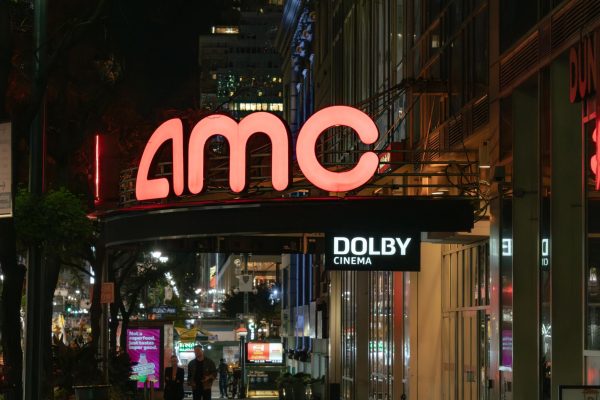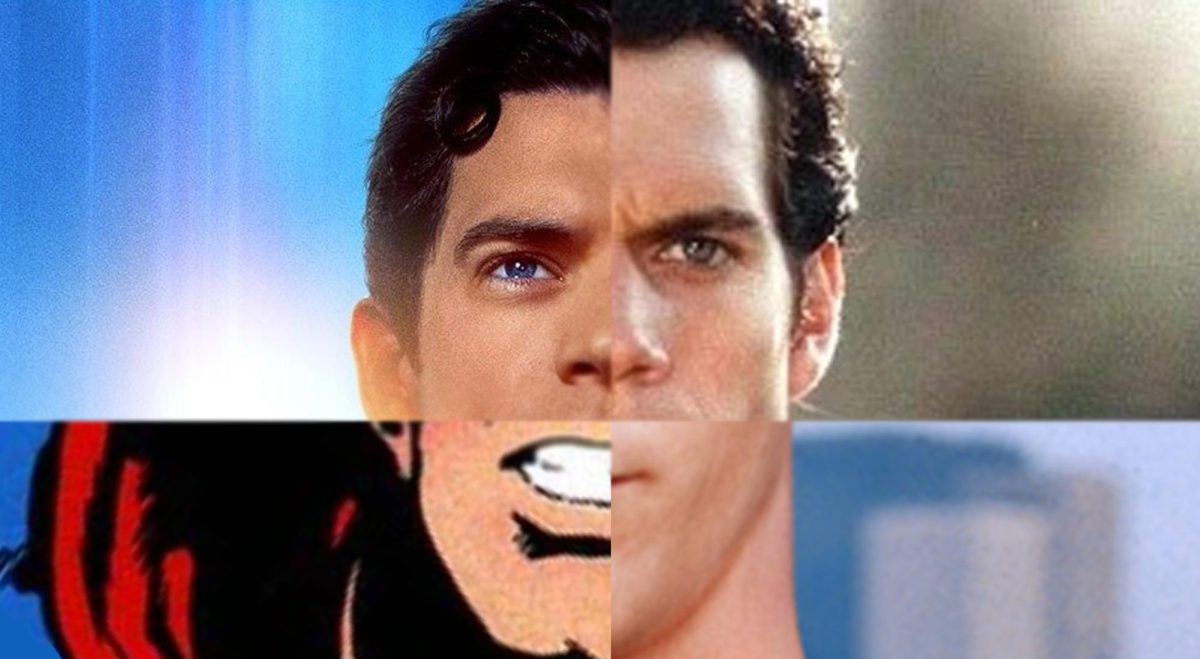I call myself a casual cinephile, but I did not see any movies in theaters this past summer. Can you blame me? Every time I checked my local theater’s listings, there was nothing to watch but reboots and sequels. “The Naked Gun”? Remake. “Freakier Friday”? Sequel. “The Roses”? A remake of a 1989 book adaptation. “From the World of John Wick: Ballerina”? A reboot of a movie franchise. There are simply fewer original ideas being put to screen these days, and it does not seem like audiences care.
Even new scripts originate from existing texts — “The Long Walk” is an adaptation of a Stephen King novel, Guillermo del Toro’s “Frankenstein” is another adaptation of the eponymous novel and Emerald Fennell’s upcoming film is another take on the Emily Brontë classic “Wuthering Heights.”
It seems that the film industry is veering away from original creations in favor of rehashing the same storylines, replacing old scripts with currently famous actors, contemporary references and recognizable soundtracks.
Especially in the post-COVID era, when theater attendance rests at dangerously unprofitable rates, there is no impetus for film distribution companies to take risks
It is not difficult to figure out why adaptations and sequels are easier choices for production companies — it is guaranteed profit, as relying on existing intellectual property is less of a gamble than spending on promotion for a title, characters and storyline no one has ever heard of. Especially in the post-COVID era, when theater attendance rests at dangerously unprofitable rates, there is no impetus for film distribution companies to take risks. Why waste money trying to endear audiences to a brand-new narrative when you can simply rely on the audience’s nostalgia to get them flocking to the box office?
James Gunn’s summer blockbuster “Superman” remake made $125 million at the box office on its opening weekend in July, according to Variety. That was one of Warner Bros.’ highest-grossing films of the summer based on opening weekends, alongside “The Conjuring: Last Rites” at $83 million, “A Minecraft Movie” at $162 million and “Final Destination Bloodlines” at $51.6 million. For comparison, the most popular original films on the list, Ryan Coogler’s “Sinners” and Joseph Kozinski’s “F1,” made $48 million and $57 million, respectively.
In another instance of the reboot craze, the “Harry Potter” franchise has a new installment in the works: a TV series by HBO retelling the events of the original book series and films. If the series of prequel films and Broadway show sequel were not enough, now there is a reboot of the original story, including one of the same actors and similar costumes and filming locations as the films. One cannot help but wonder the same thing as what Chris Columbus, a previous director and producer for the “Harry Potter” films, was quoted in Variety for saying about the series: “What is the point? … It’s all going to be the same.”
Why are audiences complacent in the revival frenzy? Why can we not shake ourselves from rewatching the same storylines?
HBO’s history as a subscription-based cable television network allowed it to be the motivating force behind many iconic, prestigious television shows in the late ‘90s and early 2000s, such as “The Sopranos,” “The Wire” and “Curb Your Enthusiasm.” More recent projects such as “Game of Thrones” or “Succession” have continued the network’s legacy for producing original and successful projects. If HBO has decided to spend its capital financing and releasing a reboot of an adaptation of a twenty-year-old franchise, that is undeniable proof that nostalgia is the goldmine for today’s film and television industry.
This strategic choice made by major players in the film industry has completely overtaken both local movie theaters and streaming services, while original art is sidelined to limited releases in major American cities. It is safe to assume that the revenue made by these safe choices is reinvested in more reboots and sequels, continuing the positive feedback cycle and spurring the growth of the film adaptation business.

(GRACE SANTOLI)
Why are audiences complacent in the revival frenzy? Why can we not shake ourselves from rewatching the same storylines? Why do we prefer the assurance of a familiar character, albeit performed by a different actor and in different costuming?
My diagnosis is that, in the post-COVID era, we desire continuity — proof that we live in the same world we were born into. We consume the same narrative conflicts we have watched earlier in our lives, comforted by our knowledge that they will be dependably resolved. We develop parasocial connections with characters, preferring their company rather than risking the turbulence of losing oneself in a new narrative with no guaranteed ending.
This desire for comfort through repetition is evident in a pop culture moment from 2021. Steve Burns, the actor who played the eponymous host in the children’s television show “Blue’s Clues” from 1996 to 2003, participated in a video for Nickelodeon’s social media. Although the video was posted on the accounts for Nick Jr., Nickelodeon’s specialized channel for preschool programming, the intended audience for the short clip was millennials who had grown up watching the show.
Inhabiting his character from “Blue’s Clues” again, Burns apologized for leaving the show abruptly, reiterated the relevance of the lessons he taught in the kid’s television show and congratulated his former viewers on having made it to the challenges of adulthood. He did this all in the friendly, patient and gently patronizing cadences of a children’s television show host. As of now, the video has received more than a million likes on X.
We watch sequels of older films because it is reassuring to see the characters we once watched as children grow up like us, struggling with the same problems as always, which are doubtlessly resolved by the inevitable happy ending.
The embrace of Burns’ video demonstrates the grip that nostalgia has on millennials and Generation Z. It seems that grown-up audiences spent years waiting for an apology from Burns as to why he suddenly left the show — a decision he revealed he made based on his struggle with depression and a nagging feeling that he was getting too old to play a sprightly host of kid’s television programming. His return — and acknowledgment of the trauma he caused by his departure — was cathartic for those who had seen him suddenly disappear from their screens and lives.
Perhaps this is why adaptations and reboots are what motivate audiences to buy movie tickets. We desire the recapitulation of familiar problems, searching for a resolution that satisfies our need for congruity in the world. We watch sequels of older films because it is reassuring to see the characters we once watched as children grow up like us, struggling with the same problems as always, which are doubtlessly resolved by the inevitable happy ending. Our curiosity is stimulated in safe doses by slight changes to the same old stories.
The COVID-19 pandemic sparked a period of turbulence that will define our age in future history books. It is unsurprising that those who lived through it are marked by the experience of social isolation and economic uncertainty. This anxiety is reflected in our generation’s overarching taste in art, which conveys a desire for conserving repetitive, predictable narratives.
However, is the right solution really sticking to reboots? Satisfying our desire to immerse ourselves in a film or television show by reliving the same narrative, albeit with actor, costume and set changes, is a vicious cycle which promotes an uncurious approach to art. The more one refuses to challenge oneself, the more likely watching a new, unheard-of movie will be anxiety-inducing rather than compelling.
The argument against reboots does not just have to be a philosophical diatribe — it can be put to action, as well. Individuals, after all, are what make up the box office numbers that convey what kind of art is lucrative to distribution companies. I am not arguing you should not watch the “Wuthering Heights” film if you are really looking forward to seeing how Emerald Fennel pulls it off, but maybe if it is a casual hate watch, you might consider ignoring your ire and buying a ticket to another title you have never heard of.
Nostalgia is alright in small doses, but it cannot be the only motivating factor behind what we see in theaters. Creativity still exists — one only needs to browse local film festival selections or peruse the low-budget sections of streaming services to find that new narratives are put to reel every day. The surge in reboots does not signify a lack of original ideas, but the refusal to entertain them in movie theaters which seek to make the most money they can out of a film’s screening.
As students at Lincoln Center, we are in the unique position of being able to watch a plethora of original movies — arthouse cinemas such as Metrograph or the IFC are mere train rides away. The New York Film Festival is held a block away from our campus every year — even if you cannot get in-demand tickets for highly coveted releases, you can always rely on Film at Lincoln Center’s prestigious programming to bring you interesting, international films.
This fall, consider skipping the adaptation-reboot “Kiss of the Spider Woman” and opt for an original story that has never been put to screen before — uncertainty and surprise are not unworthy emotions.




